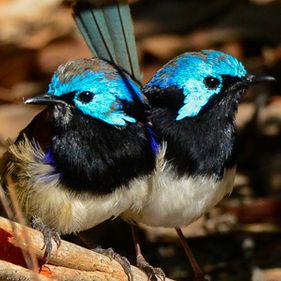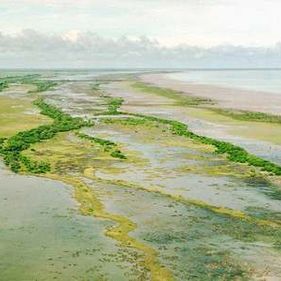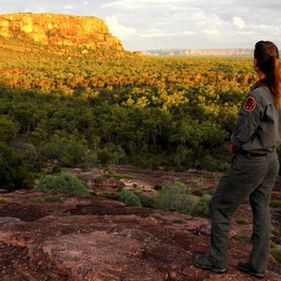About us
Parks Australia’s six Commonwealth national parks protect some of the country’s most stunning natural areas and Aboriginal heritage.
Parks Australia is part of the federal environment portfolio. We support the Director of National Parks who has responsibility under federal environment law for six Commonwealth national parks, the Australian National Botanic Gardens and Australian Marine Parks.
Our national parks range from Christmas Island and Pulu Keeling far out in the Indian Ocean to Norfolk Island in the Pacific, Booderee on the NSW south coast and World Heritage-listed Kakadu and Uluṟu-Kata Tjuṯa National Parks in the Northern Territory.
Our organisation
Purpose
To protect, conserve and enhance the values of Commonwealth parks and gardens for the use and well-being of all Australians.
Performance criteria
- Criterion 1: Sustainable use and enjoyment of Commonwealth parks and gardens by the Australian and international community
- Criterion 2: Opportunities and threats to natural and cultural values are effectively managed for all Australians
- Criterion 3: Partnerships with Traditional Owners and/or other stakeholders enhance the management of Commonwealth parks and gardens for all Australians
Ways of working
- Evidence-based management: Traditional knowledge, science and research are used make management decisions
- Ecologically sustainable use: Parks Australia acts to enhance Australia’s social and economic well-being through ecologically sustainable use of our places, with awareness of our own environmental footprint
- Partnerships and co-investments: Partnerships and working together with our stakeholders to support delivery of innovative programs that achieve our purposes
- Responsive organisation: Parks Australia is an efficient and effective agency with a proud and motivated workforce, supported by efficient business systems
Joint management
Uluṟu-Kata Tjuṯa, Kakadu and Booderee National Parks are owned by Aboriginal people and leased to the Director of National Parks (DNP).
For our parks, joint management is a guiding management principle and refers to both a legal and procedural arrangement, under which these three parks are managed in cooperative arrangements between the DNP and Traditional Owners.
The structural or legal principles that underpin the current joint management arrangements are: land rights and legal ownership of the land in communal title; lease-back to the DNP (and related obligations defined in a lease); and the establishment of a Board of Management with an Aboriginal majority.
For staff working in one of the jointly managed parks, the joint management relationship is at the heart of everything you do - from the way work is planned and implemented to the day-to-day relationships you have with Traditional Owners.
Whatever the legal arrangements of joint management, the health of the joint management experience is most often judged on the quality of daily interactions between Traditional Owners and staff. This means that everyone has a role in working with Traditional Owners, learning together and sharing your expertise to contribute to the management of the park and achieving the Traditional Owners’ aspirations for the park.
For staff working in one of Parks Australia’s shared services areas, joint management influences the operating context of our work. Developing policies and supporting operations in a cross cultural environment means communication, consultation and providing appropriate time frames should be an essential part of your approach.
Organisational structure
Download a PDF of our organisational structure:
DNP Audit and Risk Committee
The DNP Audit and Risk Committee has been established in compliance with section 45 of the Public Governance, Performance and Accountability Act 2013 (PGPA Act) and section 17 of the Public Governance, Performance and Accountability Rule 2014 (PGPA Rule).
This committee provides independent advice to the Director of National Parks (as the accountable authority) on the agency’s risk, finance, control and compliance frameworks and its external accountability responsibilities.
Under the Act, the accountable authority must determine the functions of the audit committee by written charter:
Working environment
Locations
Parks Australia employees live and work near each of our national parks locations, as well as in main cities at:
- Christmas Island (and Pulu Keeling) in the Indian Ocean
- Norfolk Island in the Pacific
- Booderee at Jervis Bay on the NSW south coast
- Kakadu in the far north of the Northern Territory
- Uluṟu-Kata Tjuṯa in the south west of the Northern Territory
- The Australian National Botanic Gardens in Canberra
- Offices in central Canberra
- Offices at Kingston in Hobart.
Public facilities and access are limited in some of our remote locations. We recommend you research the working location you are interested in thoroughly before submitting an application, bearing in mind you and your family’s needs in terms of schools, clubs, sporting facilities and so on.
Our remote parks are in breathtaking natural environments, and employees often describe these work settings as uniquely rich and rewarding.
Work health and safety
Parks Australia is committed to ensuring the health and safety of our workers and our visitors. Parks Australia’s fundamental belief is that all injuries can be prevented.
Parks Australia employees work in a range of practical ranger roles and office-based environments, and face a broad range of risks and hazards depending on their role including:
- Interactions with wildlife (e.g. spiders, snakes, marine animals, buffalo, crocodiles, native wildlife and domesticated animals)
- Interactions with members of the public (e.g. education programs, compliance and enforcement activities)
- Extreme environmental conditions (e.g. heat, cold, fire, storm conditions and flooding)
- Working with hazardous substances and dangerous goods (e.g. chemicals)
- Working with plant and equipment (e.g. vehicles, quad bikes, vessels, firearms, tractors, workshop tools or wElders)
- Working alone and in remote locations.
The Work Health and Safety Act (Cth) (2011) and the Work Health and Safety Regulations (2011) are the overarching laws that provide a framework to protect the health, safety and welfare of all workers at work. They also protect the health and safety of other people, such as visitors, who might be affected by the work of Parks Australia. Underpinning the WHS Act and Regulations is a suite of Codes of Practices published by Safe Work Australia.




